Rosina Lippi's Blog, page 4
August 12, 2017
Doping up Baby
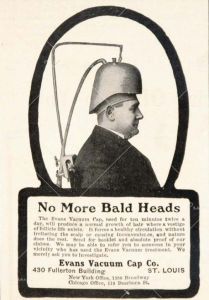 It’s often distressing to read 19th century advertisements. Our great-great grandparents were just as desperate (and gullible) when it comes to certain aspects of the human condition. Hair loss, for example.
It’s often distressing to read 19th century advertisements. Our great-great grandparents were just as desperate (and gullible) when it comes to certain aspects of the human condition. Hair loss, for example.
Weight-loss was just as big a topic back then as it is now, though body image was not quite so awful.

Nobody likes a crying baby. Parents don’t like their kids to be in pain or distress, and strangers are often pretty intolerant. Do a google search and you’ll see that this is a perennial problem with no easy solution. Sometimes babies just cry. Sometimes babies get really sick, and they scream. Sometimes overwrought caregivers are driven to extremes. There is no excuse for that, but it happens. It happened then, too.
What’s most disturbing about the 19th century is how unaware they were of the dangers of doping their children. Have a look at this handy dandy cure for the crying baby available at every drugstore.
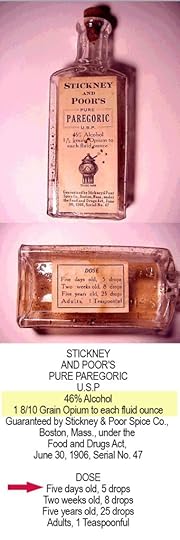 Stickney & Poor’s Paregoric
Stickney & Poor’s ParegoricIt’s a challenge to stay in the mindset of your characters when you’re writing historical fiction. An intelligent, sensible person who truly believes that there’s nothing dangerous about smoking, or a little laudanum is just what the baby needs, that is sometimes hard to pull off. I consider it a kind of anachronism to pretend a character understood something that was just not knowable at the time, but I struggle with it.
Of course there were quacks who knew very well that what they were selling would do nobody any good. For instance this cure for male weakness. Note the positioning.


July 28, 2017
I have great beta readers
This is the first feedback from one of my beta readers on the first 3/4 of Where the Light Enters.
I think I will have to have it framed and hung right where I can see it when I look up from the screen.
If you put the space shuttle scene this early in the book, I’m not sure what Jack is going to do for the rest of the second act. Killing zombies is only going to hold the audience’s interest for ten or so pages at a go. I’ll have more observations as I get further in, but I will add that this is the best time travel scene I’ve ever read. A lot of authors have tried to describe the idea of a fourth dimensional space, but you nailed it here.

July 27, 2017
The truth about self publishing
Nicole Dieker has a post on Jane Friedman’s weblog that is essential reading for anybody who is thinking about self-publishing. Here’s the reason you should read it if you fall into that category:
So I spent several months researching the self-publishing process and planning my own marketing and publication strategy. It turns out that there’s a lot of information on how to self-publish a book, and a lot of advice regarding marketing, social media, and so on—but there aren’t as many case studies showing how well these publication strategies work.
Which is why I’m giving you my own case study. Everything I’ve done so far, along with the costs and the results.
I’ll start with the most important statistic first: as of this writing, I’ve sold 167 ebooks and 118 paperbacks, and my royalties and earnings total $803.90.
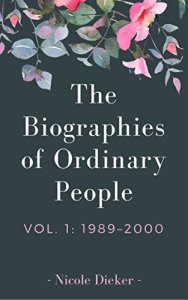 Dieker has earned a total of $803.90 for her The Biographies of Ordinary People. She breaks down what she has paid for production, shipping, and marketing from multiple angles. What she doesn’t include in her analysis: her time. The time it took to write the novel, and the many, many hours that went into organizing publication and marketing. My guess is that if you could add all the time up she’d have earned something far below the minimum wage.
Dieker has earned a total of $803.90 for her The Biographies of Ordinary People. She breaks down what she has paid for production, shipping, and marketing from multiple angles. What she doesn’t include in her analysis: her time. The time it took to write the novel, and the many, many hours that went into organizing publication and marketing. My guess is that if you could add all the time up she’d have earned something far below the minimum wage.
It was courageous of Dieker to self-publish, and in my opinion, even more courageous to write in such detail about the process. Certainly I’m thankful that she went to the trouble to actually analyzing how well the various (often highly priced) marketing strategies work.

July 23, 2017
a romance by any other name

Here’s a cheesy, tacky, pretentious turn of phrase that makes me shudder:
They shared a kiss.
This phrase works for me like a red flag. It says that I am reading a run-of-the-mill, no surprises, HEA romance. Which is fine, if that’s what I’m looking for.
But this morning I was looking for a summary of the latest political fuckery, when I caught sight of an unusual headline in The Washington Post: “A ‘lost’ wallet leads to found love.”
Now, it’s no secret that I truly appreciate a good romance, so I read the article, and I’m both confused and irritated by it. It’s not fiction, it’s not a review, it’s not news, it’s … family newsletter material. A little story about how two young people met and fell in love, shared that kiss, and got married.
Nice enough people, boring story. If it were fleshed out to novel length and turned into fiction, it would not be anything exceptional and in fact might be crap, in accordance with Sturgeon’s Law: 90 percent of genre x is crap, but then 90 percent of everything is crap.
Sturgeon’s Law:
[This] was wrung out of me after twenty years of wearying defense of science fiction against attacks of people who used the worst examples of the field for ammunition, and whose conclusion was that ninety percent of SF is crud. Using the same standards that categorize 90% of science fiction as trash, crud, or crap, it can be argued that 90% of film, literature, consumer goods, etc. is crap. In other words, the claim (or fact) that 90% of science fiction is crap is ultimately uninformative, because science fiction conforms to the same trends of quality as all other artforms (Venture 49, 1957).
So I find this WaPo article to be surprising in its ordinariness and I wonder why it deserves column space. I wonder if it could be rewritten into something interesting. I wonder, but mostly I’m just irritated.
The only upside: I was reminded of an entertaining 2016 Guardian article about genre and reactions to genre, with emphasis on romance fiction. That was worth reading again.

July 21, 2017
card games, then and now
II have done some research on nineteenth century children’s games before, but this time I was looking for card games in particular when I came across a mention of Happy Families, which is played something like Authors. From Board Game Geek:
This game was designed in England and was originally published for the Great Exhibition by John Jaques & Sons. The outside of the box described the name as Happy Families while the inside of the box describes the name as Merry Families. Each quartet consists of four family members — a father, a mother, a son, and a daughter. The fathers are Mr. Daub the Painter, Mr. Dough the Baker, Mr. Pill the Doctor, Mr. Sand the Grocer, Mr. Saw the Carpenter, Mr. Snip the Barber, Mr. Stain the Dyer, Mr. Smut the Sweep, Mr. Thread the Tailor, and Mr. Tub the Brewer.
What I like about this is the art work:
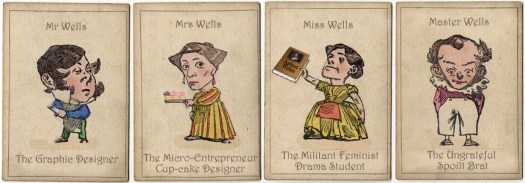
Compare this game to more current editions of Old Maid:
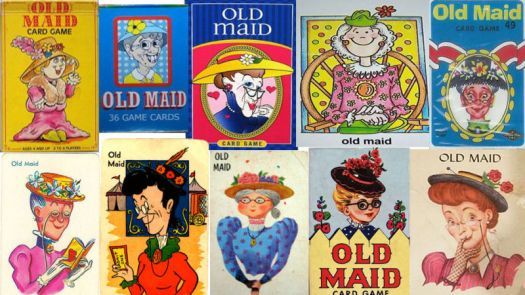
So maybe I’m being overly picky here, but why are the modern illustrations for children’s card games garish and shoddily done? There are so many wonderful illustrators out there, is it just a matter of the manufacturer going with the cheapest options?
Irritating.
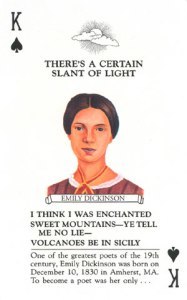 I went to look up Authors just to see if that game has had better treatment, and the answer is, as far as I can tell, no. There are multiple editions of the card game Authors. When I was a kid the deck was all dead white men, but there are now games called American Authors, Women Authors, Children’s Authors. Unfortunately it seems none of them are especially carefully or artistically done, as you can see by this example.
I went to look up Authors just to see if that game has had better treatment, and the answer is, as far as I can tell, no. There are multiple editions of the card game Authors. When I was a kid the deck was all dead white men, but there are now games called American Authors, Women Authors, Children’s Authors. Unfortunately it seems none of them are especially carefully or artistically done, as you can see by this example.
But there are great illustrators who do author portraits. Ryan Sheffield sells his work on Etsy, including his version of Emily Dickinson, below.
Somebody like Ryan Sheffield should put together a modern version of Authors using original artwork. It would be a good idea to have some info about the author along with the titles of their work, of course.
Would you be interested in a game of Authors like this? I’m really curious.
Note: I don’t know Mr. Sheffield and he doesn’t know me. I just found his work on Etsy and my imagination took off.

July 11, 2017
Back in the Day
“Back in the day” is a phrase that came into broad usage suddenly and spread quickly maybe a decade ago. I remember hearing a character on Entourage (HBO) use it and thinking that it was already on the brink of becoming a cliché. Which is too bad, because I like it.
It’s a human thing to attach emotion to particular words and phrases. We hate some words and others evoke nostalgia. There are words that work for me like chalk squeaking on a blackboard (for example: blog, which is why I use weblog). Others I adore. In grade school Spanish class I fell in love with the word pupitre. It still makes me smile.
Lately I seem to be awash in nostalgia more generally. I’m hoping it will subside sooner rather than later, but for the moment, here’s my question. According to the statistics quite a lot of people read this weblog. If you’re reading it and you were once a student of mine, I’m wondering if you’d be so kind as to send me an email and re-introduce yourself. I taught many hundreds of people over fourteen years — first at Princeton, when I was a graduate student, then at the University of Michigan, then at WWU, but currently I’m in touch with only five or so of them. I also student taught and then taught fourth grade in Austria.
Call it idle curiosity or nostalgia or whatever. I’d like to hear from you. To make it easier: email me. Or comment here. Whatever works.
Illustration by Elvira Wolven Krieger @DeviantArt

July 10, 2017
Editorial Me
So after futzing around with this for years, I’m officially launching myself as a consultant. Primarily for those who write fiction, but not exclusively. You can get the skinny on the sub-sub-webpage (click on the header below).
This is a practical (and necessary) move. You may have read here or elsewhere that over a five year period, incomes for full time writers dropped about 28 percent. As the cost of living has not dropped 28 percent, the difference has to be made up somewhere. This is something I have done, and can do, and I take great satisfaction in helping storytellers get started. So it’s a practical, necessary and logical move.
If you know of anyone who might be interested in working with me, please point them in the direction of WRITE.

July 8, 2017
Chunka Hunka Burning Love: Chicago
I was looking for an older document and came across a novel I’ve been working on for oh, twenty years or so. Some day I may finish it. But this bit caught my eye, because I’ve been very homesick for Chicago lately. I actually remember writing this, because I still now get an echo of the raw feelings it evoked in me.
From Saving Eliza. All Rights Reserved.
It is rush hour when Kate crosses the Indiana border into Illinois. The traffic is fierce, cars and trucks charging over the Sky Bridge like a pack of dogs jockeying for position, nosing each other from lane to lane. All the way up Stony Island houses crouch together like lepers, shedding shingles, asphalt siding peeling in long blackened strips. The heat shimmers above the parking lot of an abandoned grocery store, weeds growing up through cracks in the pavement; in the window of Larry’s Chicken Shack a hand-lettered sign announces that the air conditioning is in working order.
The heat has driven people out onto the street in search of a breeze. They move along in jittery waves, children and men bare-chested, younger women in shorts or bathing suits, their grandmothers in caftans that billow around them like sails dappled in jewel colors: emerald, sapphire, ruby, citrine, amethyst.
Cornell Drive swings around the Museum of Science and Industry and the traffic surges onto Lake Shore Drive, pulling Kate along. It is always at this point that she feels the thrill of coming home, her first view of the lake, slate blue under gathering clouds. A thunderstorm coming; she can taste it in the air already, bright and crackling on her tongue. When she turns on the radio again the voices that fill the car are pure Chicago: vowels shifted backward, consonants soft around the edges, as familiar as the outline of the Loop in front of her.
The traffic canters past Grant Park and Navy Pier. On the Oak Street beach somebody is flying a kite on the wings of the fledgling storm, a sulphur colored smudge against a charcoal sky. Kate rolls up the window at the first lashings of rain, and heads for home.

July 7, 2017
I’ve got a (novel) fantasy
After years and years of mulling something I lived through in my twenties, yesterday in the shower, a plot came to me. It was so clear and well formed that it’s quite obvious my subconscious has been working on it behind the scenes since about 1985.
Have I ever mentioned that I love revenge plots? I think that in life I have always taken a peripheral position; I’m never with the majority. If I try to be with the majority just for the sake of fitting in, I get heartburn. I am contrary by nature, and yes, I realize this is no big surprise to anybody who knows me or reads my work.
So this revenge fantasy that came to me in the shower would be a contemporary novel. The very idea gives me gooseflesh. After all these years I could address something that struck me as unfair and unkind, and make it all come out differently. Not in a happily-ever-after way; I don’t think that would be possible. But there would be significant satisfaction in it, even so.
Basically this would be a novel about the person I might have been, if I had allowed my darker side to rule. But oh, it would be fun to write.
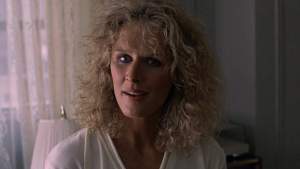
Does that sound like something you’d read, or something you’d run away from? Consider novels like The Count of Monte Cristo, The Girl Who Kicked the Hornet’s Nest (the third book in the Girl with a Dragon Tattoo series), Different Class (Joanne Harris), or one of my favorite Stephen King short stories, “Dolan’s Cadillac” — the audio recording is fantastic, if you have a chance to listen to it. And great revenge movies: too many to name.
There are, of course, darker revenge fantasies. Glenn Close, the Fatal Attraction bunny boiler, was seeking revenge and (I would argue) not unreasonably. She just went a little overboard.
I don’t intend to go that far. Really. Or at least that’s my story, and I’m sticking to it.
Thoughts?

June 18, 2017
Visual Prompts
 Just in case you’re wondering — When I come across a photo that I find interesting in terms of storytelling, I add it to the list of revolving header images you see on this website. I haven’t figured out how to caption the header images so if you’re interested in knowing more about a particular image, please ask.
Just in case you’re wondering — When I come across a photo that I find interesting in terms of storytelling, I add it to the list of revolving header images you see on this website. I haven’t figured out how to caption the header images so if you’re interested in knowing more about a particular image, please ask.






